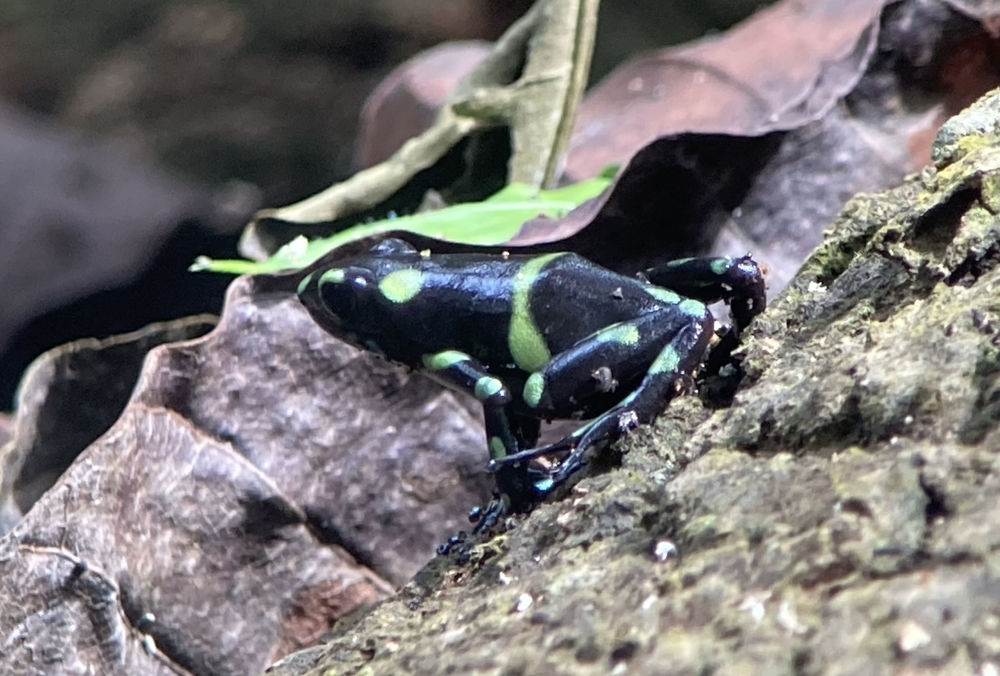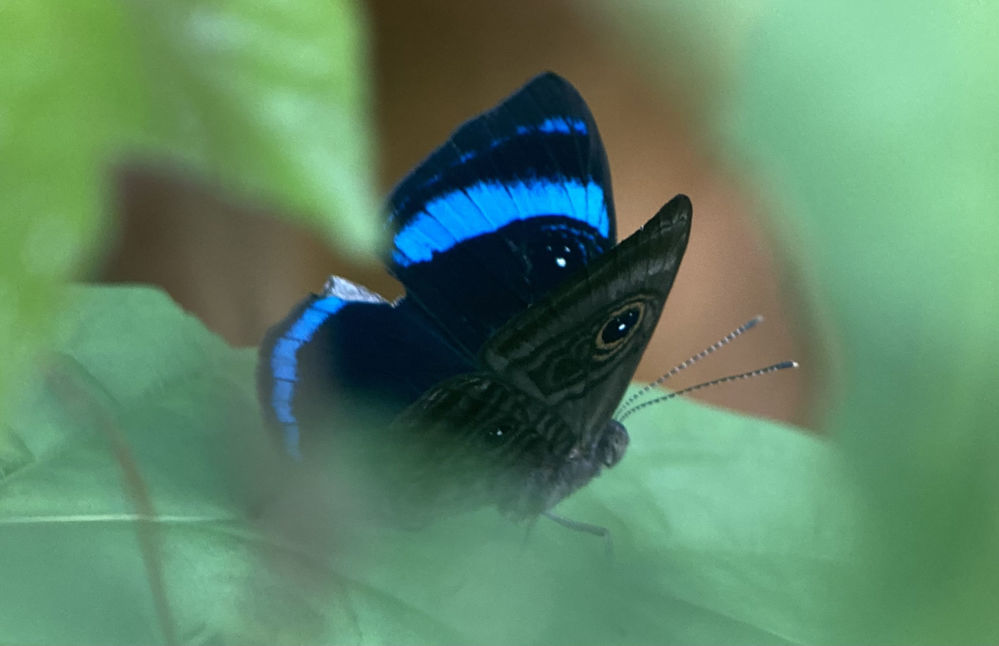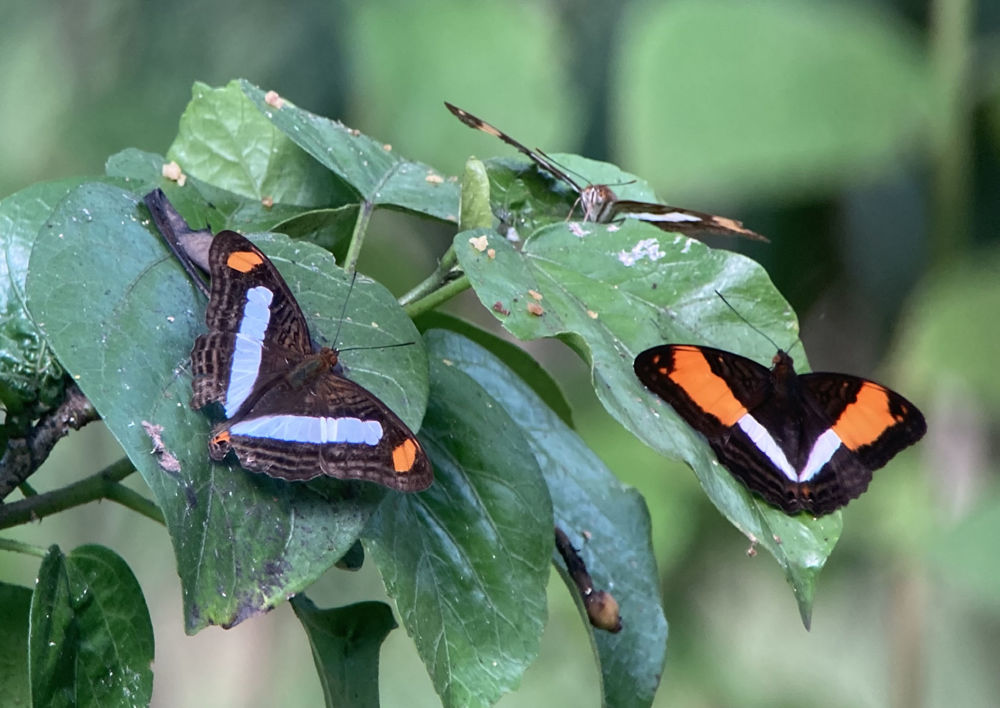Departure Date: October 11 - 19, 2025
Compiled By: Barry Zimmer
Trip Leaders: Barry Zimmer, Local Leader
Toll Free: 800.328.8368
Phone: 512.328.5221
Panama's Darien Lowlands: Canopy Camp 10/11/2025-10/19/2025

https://ebird.org/tripreport/422076
The morning of our third day began with a drive to Yaviza, followed by a thirty-minute boat ride up the Rio Chucunaque and another short drive into the village of Pirre #2. Finally, a short three-quarter mile hike over a flat but somewhat muddy trail through the forest brought us to the site. Just ahead of us, a giant cuipo tree towered overhead and over the rest of the forest. We were so close now. Our pulses raced as we approached the tree. From a small cleared area in the jungle, we looked out and upward at a crotch on the left side of this impressive tree. There, atop a massive bundle of sticks, sat the object of our quest, the undisputed avian king of the jungle—a truly magnificent adult Harpy Eagle in full view. It was a moment that simply took our breath away and caused audible gasping. The view was unobstructed as the female perched up on the side of the huge nest. She called intermittently, hoping for the male to bring her some food. No other sound could be heard. Our eyes remained glued to the tree. We could not look away. It was simply magical. We were able to soak in the experience of seeing the most iconic bird of the Neotropics for nearly sixty minutes. It was an hour none of us will ever forget.

Harpy Eagle, near El Real, Panama, October 14, 2025, ©Barry Zimmer
Of course, this was just one moment in an exceptional week of birding the Darién of Panama. Our trip started and ended with a night in Panama City, but for the remaining six nights, we were based out of the wonderful Canopy Camp, not far from the end of the Pan-American Highway.
Our first day was largely devoted to travel, but we managed to squeeze in a fair amount of birding along the way. Not far outside of Panama City, we tallied Savanna Hawk, Gray-lined Hawk, White-tailed Kite, Southern Lapwing, and Saffron Finch in brief roadside stops. Migrant raptors were soon much in evidence with large kettles of Broad-winged Hawks (an estimated 25,000 for the day!) and Turkey Vultures funneling eastward, interspersed with small numbers of Mississippi Kites and Swainson’s Hawks. Our first real stop was at Lago Bayano less than two hours from Panama City. A very cooperative female Barred Antshrike was quickly followed by a pair of scolding Isthmian Wrens. A male Ruddy-breasted Seedeater was spotted, a Zone-tailed Hawk sailed overhead, and a Bat Falcon posed atop the bridge. Where to look first? Venturing across the bridge, we tallied Whooping Motmot, Buff-breasted Wren, Limpkin, Cocoi Heron, and Streaked Saltator among others. A couple more stops along the highway produced a wonderful Pearl Kite, Slaty-tailed and Black-tailed trogons, a pair of White-necked Puffbirds, a Striped Cuckoo, Laughing Falcon, and some very close Mantled Howler Monkeys. This was a very productive “travel day.”
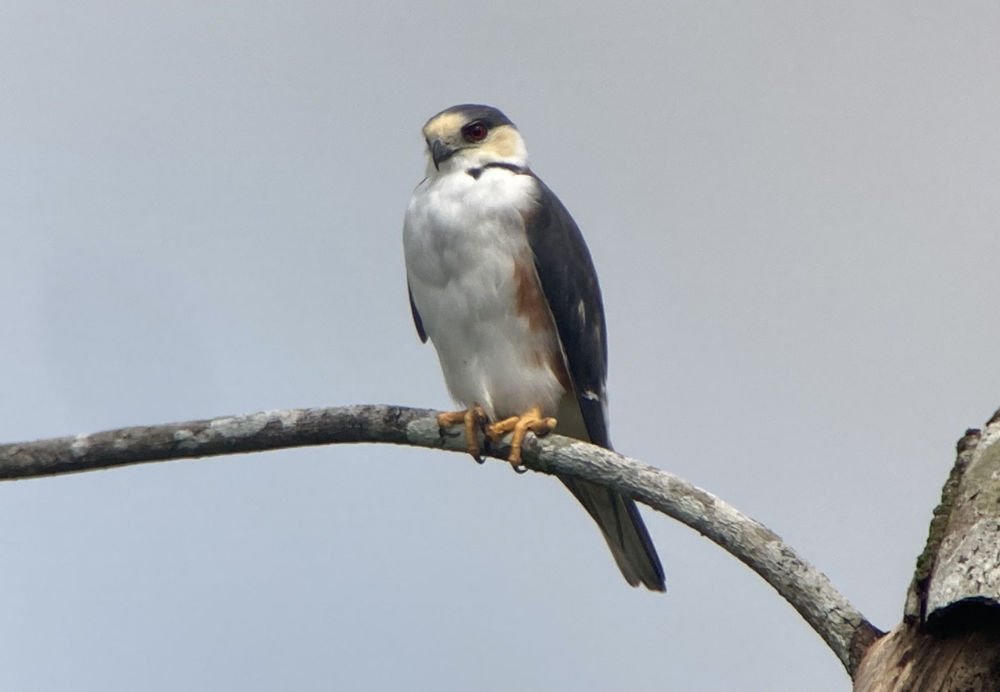
Pearl Kite, Pan American Highway, Panama, October 12, 2025, ©Barry Zimmer
By lunchtime, we had arrived in the little town of Torti. Feeders at the restaurant were not as busy as normal but did yield a couple of striking Snowy-bellied Hummingbirds, as well as Orange-chinned Parakeet, Common Tody-Flycatcher, and Red-legged Honeycreeper in the nearby trees. By 4 PM, we had made it to the Canopy Camp. As we stepped up onto the deck overlooking the Camp grounds, we were immediately greeted by a flurry of activity at the hummingbird feeders. Birds were swarming about at a dizzying pace. In short order, we tallied eight species of hummingbirds, including the likes of White-necked Jacobin, Black-throated Mango, Long-billed Starthroat, Pale-bellied Hermit, Sapphire-throated Hummingbird, and the incomparable Violet-bellied Hummingbird.
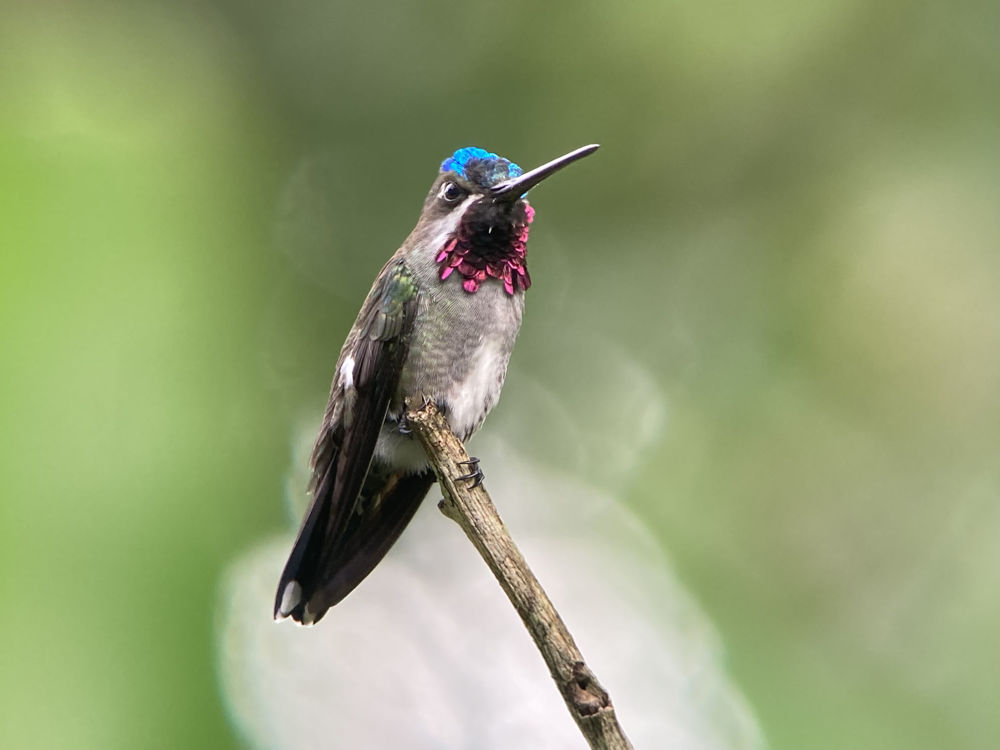
Long-billed Starthroat, Canopy Camp, Darién, Panama, October 12, 2025, ©Barry Zimmer
A couple of Chestnut-headed Oropendolas arrived at the bananas and were soon chased out by adorable Geoffroy’s Tamarins. A wonderful Yellow-throated Toucan sailed in and took control of the feeder. Numerous Bananaquits flitted about. Suddenly, Raymond spotted a roosting Great Potoo in a tree just off the deck—wow! A dapper Cinnamon Woodpecker allowed epic views and was followed by a White-tailed Trogon. Both Golden-collared and Golden-headed manakins were spied in some fruiting bushes just off the deck. The manager of the Camp was trying to give us an orientation, as well as our tent assignments, but we were too distracted to listen. This place was a birding paradise!

Cinnamon Woodpecker, Canopy Camp, Darién, Panama, October 12, 2025, ©Barry Zimmer
Day Two found us birding the Camp grounds all morning. We met at 6 AM and had an hour or so to bird before breakfast. In that hour, we had wonderful looks at four species of trogons—Slaty-tailed, Black-tailed, White-tailed, and Gartered, all without leaving the outdoor deck. A noisy band of Greater Anis appeared in the garden. Whooping Motmots allowed crippling studies. A lone Crested Oropendola chased away some Chestnut-headed Oropendolas and was then chased by a troop of White-throated Capuchins looking for trouble. A female Blue Cotinga lit in the top of a tree, a pair of Purple-throated Fruitcrows gave a brief appearance, a Keel-billed Toucan popped in to sample the bananas, and macaw-like screeches revealed a couple of Red-throated Caracaras on the periphery of the Camp. Finally, it was time for breakfast. We could exhale.
We reconvened shortly after breakfast and spent the remainder of the morning birding the Camp clearing and the entry road. Highlights were almost too numerous to mention but included a close Rufous-tailed Jacamar, Squirrel Cuckoo, Mealy Parrots, Spot-crowned Barbet, an Olivaceous Piculet from fifteen feet away, Red-rumped Woodpecker, prolonged close views of a female White-bellied Antbird, Black Antshrike, a pair of Cinnamon Becards, Black-bellied Wren, Golden-hooded Tanager, and crippling views of a male White-eared Conebill among others. A late morning visit to the Camp’s “vulture feeding station” resulted in prolonged studies of an incredible adult King Vulture on the ground from about 40 yards away!

Olivaceous Piculet, Canopy Camp, Darién, Panama, October 13, 2025, ©Barry Zimmer
Following lunch and an afternoon break, we headed down the Pan-American Highway toward the town of Yaviza. At some marshy spots along the highway, we found a trove of new birds. At the top of the list was a rare Cattle Tyrant Raymond spotted that was riding on the back of a white horse. Additionally, we added a spectacular pair of Spot-breasted Woodpeckers, Amazon Kingfisher, Lesser Kiskadee, Fork-tailed Flycatcher, Pied Water-Tyrant, and a family group of Bicolored Wrens (quite rare in Panama). We went to sleep that night to the sounds of a Mottled Owl calling in the forest around the Camp.
The following day was devoted to the aforementioned Harpy Eagle expedition. In addition to that magical experience, we also added Capped Heron, Black-collared Hawk, six flyover Great Green Macaws, Gray-cheeked Nunlet, Tropical Royal-Flycatcher, Red-breasted Meadowlark, and the regionally endemic Black Oropendola to our rapidly growing list.
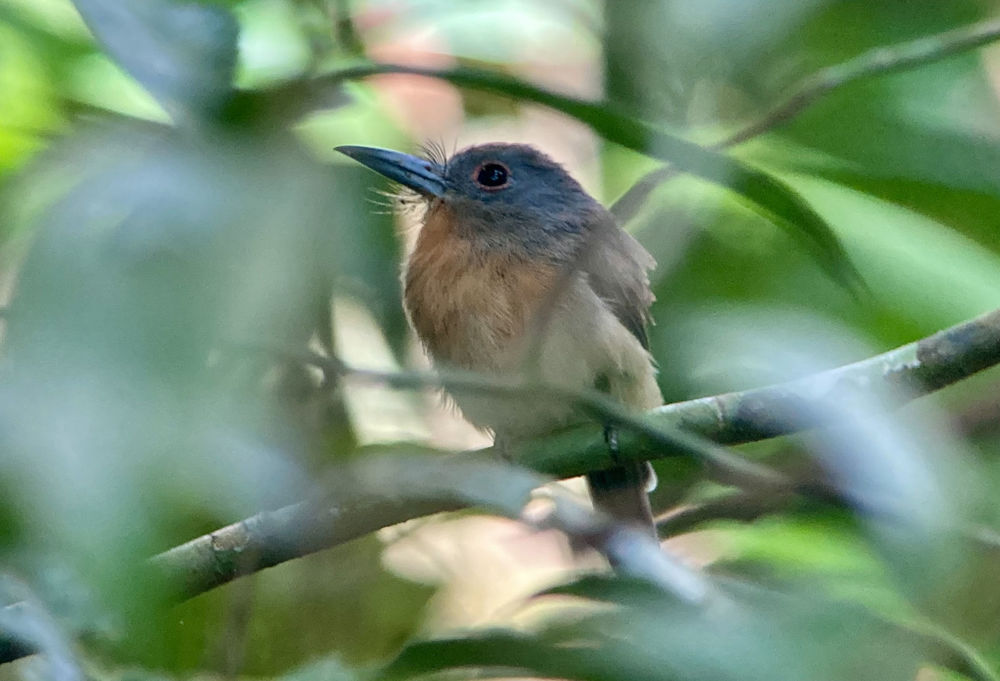
Gray-cheeked Nunlet, Pirre #2, Darién, Panama, October 14, 2025, ©Barry Zimmer
The next morning was devoted to the nearby road to El Salto. Birds were plentiful, including such highly sought species as Pied Puffbird, Golden-green Woodpecker, Blue Cotinga (male), Choco Sirystes, and Yellow-backed Oriole.
Once again, we retreated to the Camp for lunch and a break. In the late afternoon, we headed out to the wetlands of Yaviza. Without doubt, the highlight of the afternoon was the wonderful pair of Spectacled Parrotlets from about twenty feet away at eye level. This species is always a big target on our tour with its tiny world range in eastern Panama and adjacent Colombia. Other afternoon treats included a pair of White-headed Wrens, heard only Gray-breasted Crake from as close as ten feet away, a couple of Chestnut-fronted Macaws, and a very uncommon migrant Bobolink.
Day Five found us in dugout canoes and heading up the Rio Chucunaque and Rio Tuquesa toward the Embera village of Nuevo Vigia. We tallied many birds along the way including Green Ibis, Crane Hawk, Crimson-crested Woodpecker, Flame-rumped Tanager, Yellow-rumped Cacique, and Black Oropendola among others. Our primary target, however, was the highly-sought Dusky-backed Jacamar—a species restricted to a small portion of Panama and Colombia. We landed at a banana plantation where Eliecer has seen the species before. Almost immediately, we were distracted by scope views of a Blue Ground Dove, more Spectacled Parrotlets, a male Bare-crowned Antbird, and a pair of Yellow-tailed Orioles. After a short walk further into the forest, we found a pair of jacamars sitting out in the open in a cecropia. We were able to watch them for over fifteen minutes, as they hunted from exposed perches. Success! On our way back to the boats, we had a male White-bellied Antbird almost in our laps. We capped off the day with a visit to the village, where we enjoyed lunch and shopping for native crafts.

Dusky-backed Jacamar, Nuevo Vigia, Darién, Panama, October 15, 2025, ©Barry Zimmer
The next day, we opted to return to the Yaviza wetlands in the morning. Along the way, we paused at a spot along the Pan American Highway, where we were treated to an amazing show by a pair of displaying Black-capped Donacobius. Arriving at the wetlands, we made a second all-out attempt to see the elusive Gray-breasted Crake, and it resulted in several of us getting very quick views of this phantom from just feet away. Incredibly, a very rare Spotted Rail was calling close by, but we were unable to coax it into view. Other goodies here included Lesser Yellow-headed Vulture, Short-tailed Hawk, Dickcissel, and Yellow-hooded Blackbird.
In the afternoon, we visited the open country and rice fields of nearby Quebrada Felix. Three rare Aplomado Falcons may have been the highlight, but we also tallied a distant Barred Puffbird, more Chestnut-fronted Macaws, and a Giant Cowbird. A wildly successful night drive after dinner yielded Spectacled Owl right over our heads, Black-and-white Owl, and a couple of Kinkajous!

Black-capped Donacobius, Pan American Highway, Darién, Panama, October 17, 2025, ©Barry Zimmer
Sadly, the next morning, it was time to head back towards Panama City. Along the route to Torti, we stopped at a private residence where Great Curassows sometimes come in to be fed. We enjoyed amazing views of a pair at very close range, as well as a Gray-cowled Wood-Rail almost at our feet. Our final birding stop was at the San Francisco Reserve just outside of Torti. We added an impressive number of birds at this spot, including the likes of Rufous-breasted Hermit, White Hawk, White-whiskered Puffbird, very close Barred Puffbirds, Black-throated Trogon, the endemic Yellow-green Tyrannulet, Bay Wren, and Buff-rumped Warbler.
In all, we tallied 273 species of birds, twelve species of mammals, over fifty species of butterflies, and ten herps in our wonderful week of birding the Darien. We left with many priceless memories. I can’t wait to get back next year!
Favorite Birds of the Tour (by group vote):
- Harpy Eagle
- Black-capped Donacobius
- Spectacled Parrotlet
- King Vulture
- White-bellied Antbird
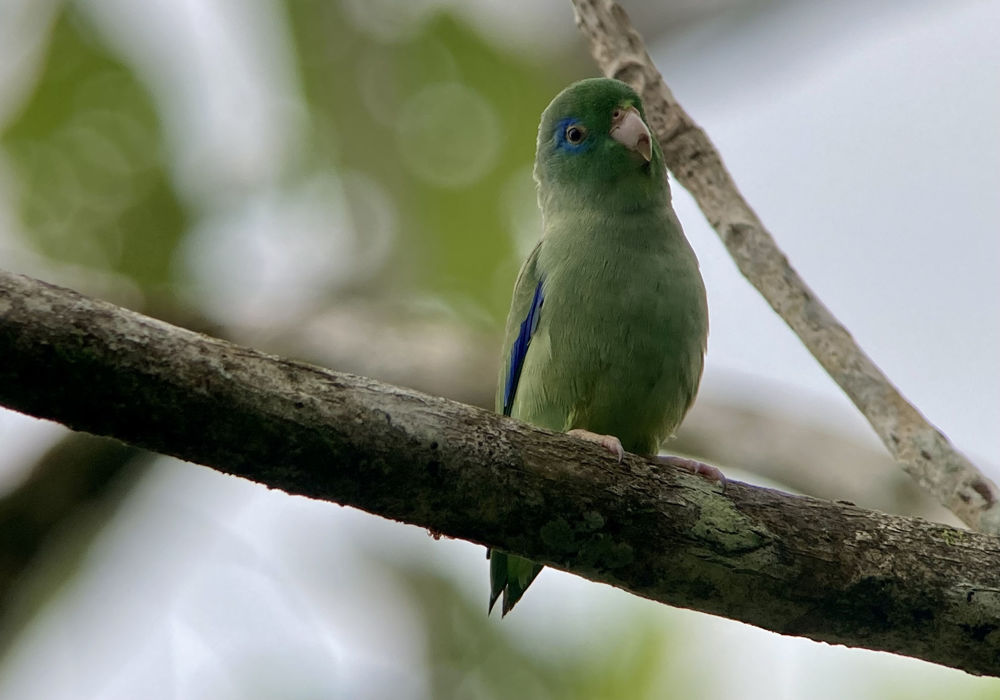
Spectacled Parrotlet, Yaviza, Darién, Panama, October 15, 2025, ©Barry Zimmer
A complete list of the birds recorded on our tour can be found at: https://ebird.org/tripreport/422076
Description for the next October departure of this tour. (A January departure is also available.)
Barry Zimmer's upcoming tour schedule.
ITINERARY:
October 11 – arrival in Panama City
October 12 – drive from Panama City to the Canopy Camp on the Pan-American Highway with stops at Lago Bayano, the Tortí lunch spot, and brief afternoon birding around the camp itself (104 species)
October 13 – grounds of the Canopy Camp all morning, afternoon trip along Pan-American Highway toward the town of Yaviza (127 species; 175 total)
October 14 – Yaviza, boat ride up the Rio Chucunaque & Rio Tuira to El Real and Pirre #2, hike to the Harpy Eagle nest site; afternoon to Sanson Abajo (141 species; 212 total)
October 15 – El Salto Road all morning; Canopy Camp midday; Yaviza wetlands in the late afternoon; night walk around Camp (128 species; 235 species)
October 16 – drive to La Penita, boat trip along the Rios Chucunaque & Tuquesa to the Embera village of Nuevo Vigia all day (111 species; 248 total)
October 17 –Pan American Highway, Yaviza wetlands, Yaviza forest in AM; afternoon to Quebrada Felix (125 species; 263 total)
October 18 – Pan-American Highway back to Panama City with stops at the curassow house in Santa Fe and at the San Francisco Reserve (103 species; 273 total)
October 19 – departures for home or on to the Canopy Tower tour (273 total species)


